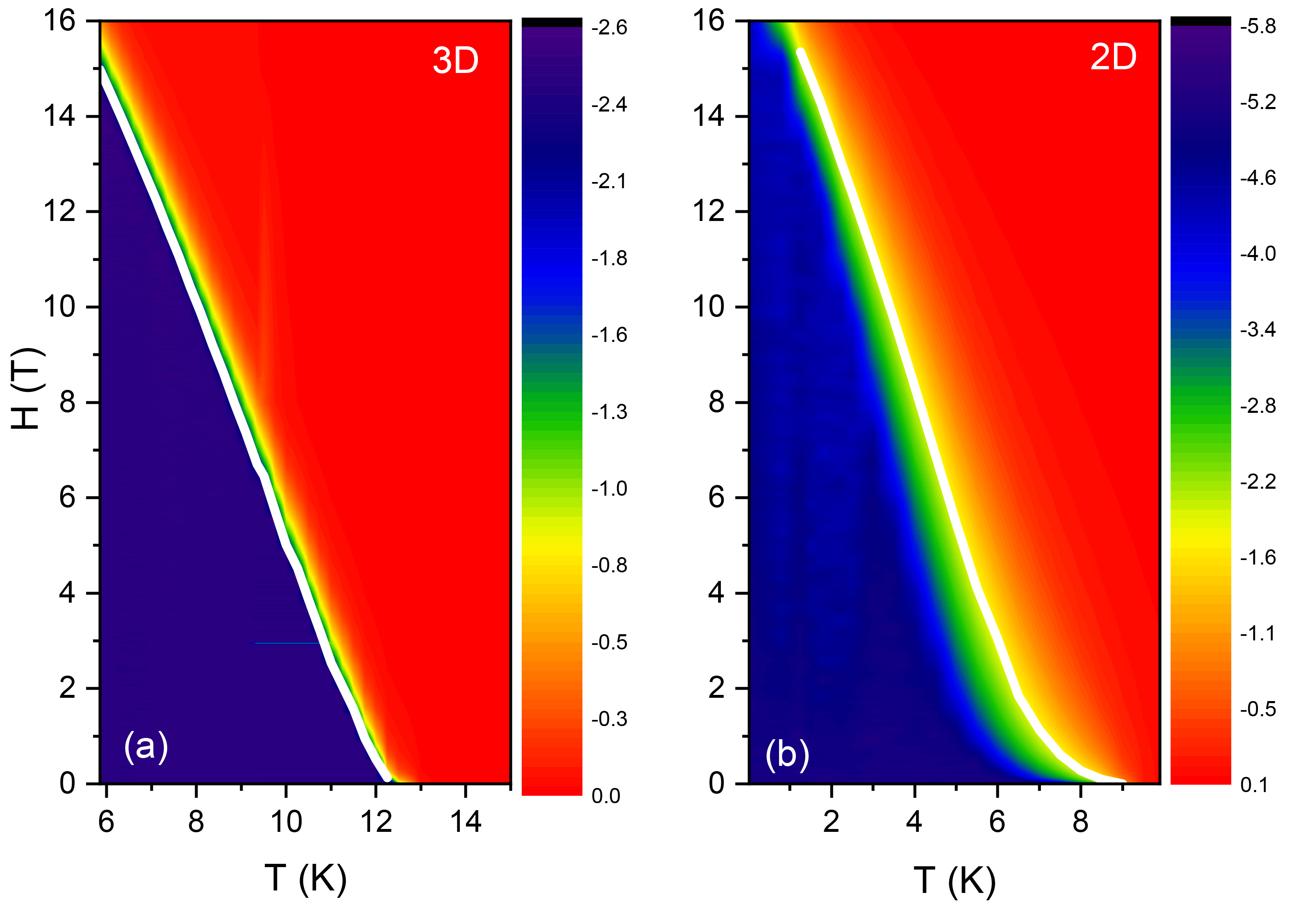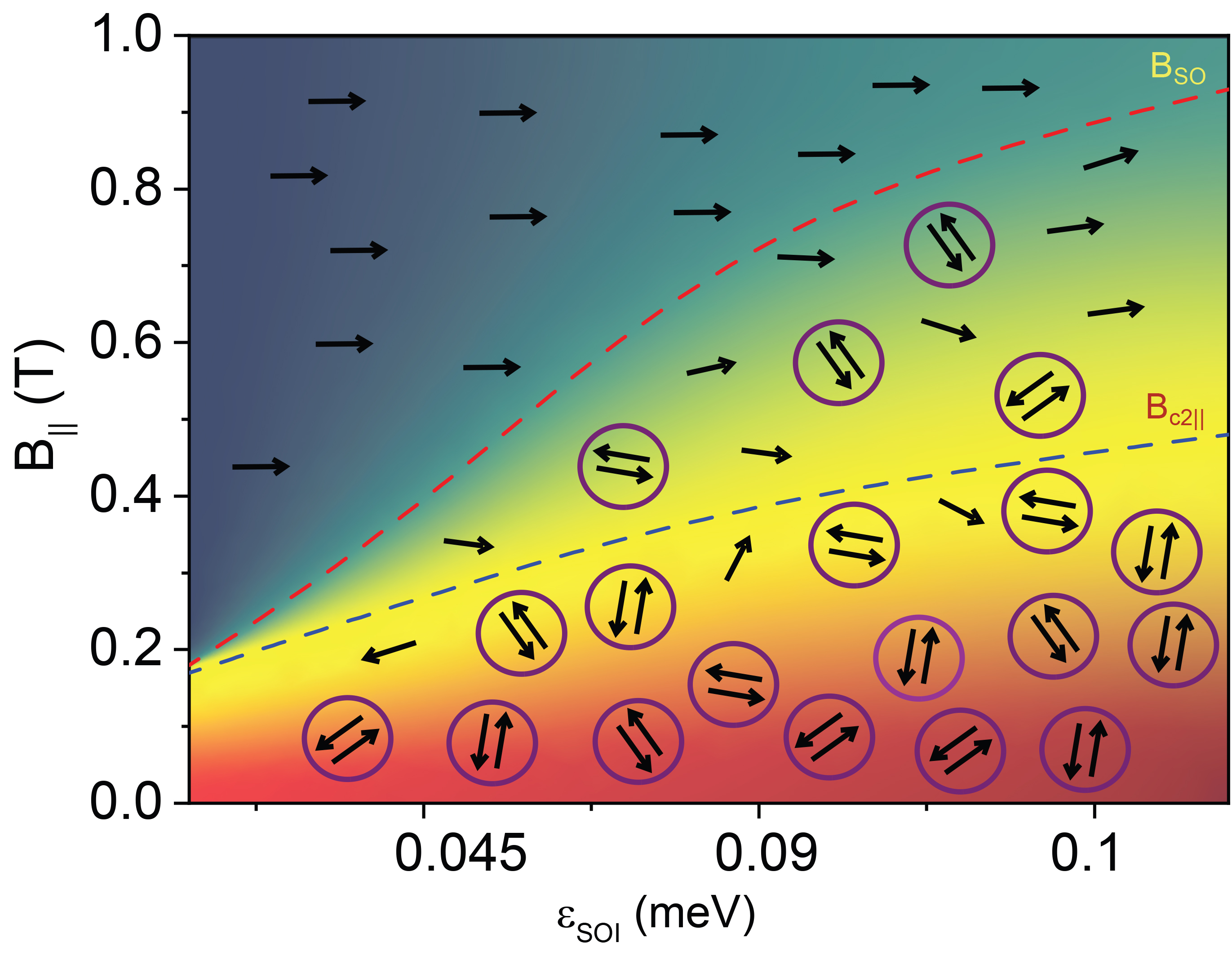Superconductivity in low-dimensional systems
Low-dimensional superconductivity is operationally defined as superconductivity in a system whose size is comparable to or lesser than the characteristic length scales – coherence length (ξ) or penetration depth (λ) of a superconductor. We have been studying a variety of low-dimensional superconductors – two-dimensional electron gas existing at the interface of oxides (e.g. LaAlO3/SrTiO3), atomically-thin layers of NbSe2 and PdTe2 mechanically exfoliated from high-quality crystals, films of conventional type-II superconductors like NbN and MoGe. Some of our recent results are discussed below:
- 2D superconductors undergo BKT phase transition where topological defects (vortices and anti-vortices) play a key role. Despite being at the core of disspationless transport deep inside the superconducting regime, vortex dynamics in 2D superconductors is not well understood. We have been looking for evidence for the existence of a vortex-solid/glass to vortex-fluid transition in 2D type-II superconductors. We probed the vortex-solid/glass to fluid transition in both 2D and 3D superconductors through studies of magnetoresistance and current-voltage characteristics. The dynamical exponents corresponding to this phase transition were extracted independently from the two sets of measurements — magnetoresistance and H-filed dependent non-linear current-voltage characteristics. The H-T phase diagram for the 2D and 3D superconductors are found to be significantly different near the critical point (data shown below). The transport properties measured over a broad range of temperature and magnetic fields followed universal scaling relations both in the case of 2D and 3D establishing that the idea of a critical behavior in vortex-solid/glass to vortex-fluid transition is valid for both 2D and 3D superconductors.

Recently it has become possible to form atomically precise interfaces in strongly correlated oxide materials that can support a two dimensional electron gas. In these oxide heterostructures, the donor layer is spatially separated from the 2DEG like in the case of III-V semiconductors giving rise to the relatively high mobilities seen in them. However, the two dimensional nature of the electron gas has been unambiguously established only in two cases so far in this class of materials – in (MgxZn1-x)O/MgO and in LaAlO3/SrTiO3. These systems are in some sense more interesting than the conventional semiconductor based electron gases as here the electrons at the interface are derived from a parent bulk form that is a strongly correlated electronic system with much richer phase diagrams. Till date there is no comprehensive study of how much of the exotic phases of the parent compounds are reflected in the interfacial layers and how these properties are modified by the quantization introduced along one direction. For example, it has been reported that the two antagonistic forms of condensed matter – ferromagnetism and superconductivity can be seen in the same system – LaAlO3/SrTiO3 interface at different temperature scales. It is such exotic possibilities that make these systems so important to study. Some of our recent contributions in this field are briefly discussed below:
- We observed a novel, magnetic field assisted transient superconducting state in the two dimensional electron gas existing at the interface of LaAlO3/SrTiO3 heterostructures. This metastable state depends critically on the doping density in the parent compound. It appears concomitantly with a Lifshitz transition as a consequence of the interplay between ferromagnetism and superconductivity and the finite relaxation time of the in-plane magnetization. Our results clearly demonstrate the inherently metastable nature of the superconducting state competing with a magnetic order in these systems. The co-existence of superconductivity and ferromagnetism in the conducting electronic layer formed at the interface of insulating oxides has thrown up several intriguing and as yet unanswered questions. An open question in this field is the energetics of the interplay between these two competing orders and the present observation goes a long way in understanding the underlying mechanism.

- Controlling spin-orbit interaction and its effect on superconductivity has been a long-standing problem in two-dimensional inversion symmetry broken superconductors. An open challenge is to understand the role of various energy scales in shaping the complex phase-diagram in these systems. From a combined experimental and theoretical study of resistance fluctuations and its higher order statistics, we propose a novel phase diagram for the superconducting phase in the magnetic field–spin orbit interaction energy plane for the quasi-two dimensional electron gas at the interface of LaAlO3/SrTiO3 heterostructures. The relative variance of resistance fluctuations increases by few orders of magnitude below the spin-orbit field B$_{SO}$ and a novel non-Gaussian component to the fluctuations arises for fields below the upper critical field BC2. Theoretical calculations show that the non-Gaussian noise predominantly arises due to percolative nature of the superconducting transition. We quantify the strength and the relative importance of the spin-orbit interaction energy, Zeeman energy and the pairing potential. Our work highlights the important role played by the interplay between these energy scales in framing the fascinating phases seen in two-dimensional inversion-symmetry-broken superconductors.

